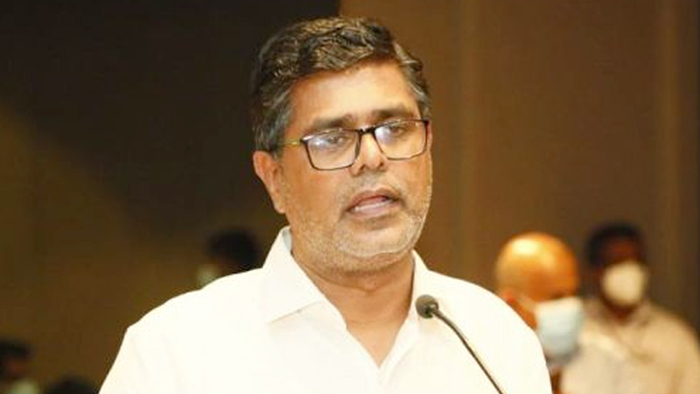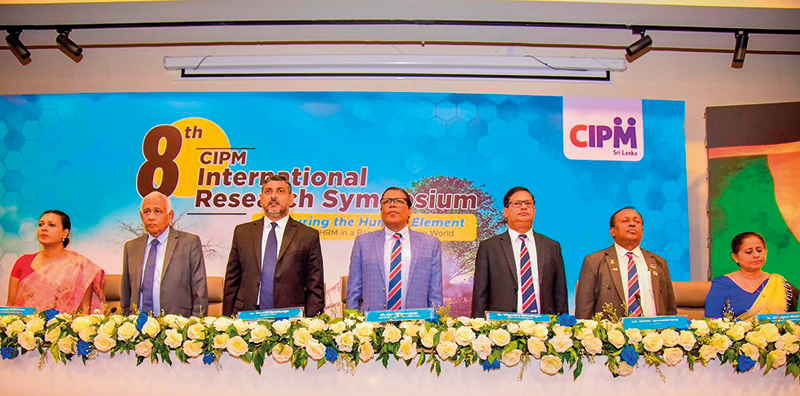News
Human activities in Asia have reduced elephant habitat by nearly two-thirds since 1700

Despite their iconic status and long association with humans, Asian elephants are one of the most endangered large mammals, Down to Earth reported.Believed to number between 45,000 and 50,000 individuals worldwide, they are at risk throughout Asia due to human activities, such as deforestation, mining, dam building and road construction, which have damaged numerous ecosystems.
My colleagues and I wanted to know when human actions started to fragment wildlife habitats and populations to the degree seen today. We quantified these impacts by considering them through the needs of this species.
In a newly published study, we examined the centuries-long history of Asian landscapes that once were suitable elephant habitat and often were managed by local communities, prior to the colonial era.In our view, understanding this history and restoring some of these relationships may be the key to living with elephants, and other large wild animals, in the future.
How have humans affected wildlife?
It isn’t easy to measure human impacts on wildlife across a region as large and diverse as Asia and more than a century ago. Historical data for many species is sparse. Museums, for instance, only contain specimens collected from certain locations.
Many animals also have very specific ecological requirements, and there often isn’t sufficient data on these features, at a fine scale, going far into the past. For instance, a species might prefer particular microclimates or vegetation types that occur only at particular elevations.
For nearly two decades, I’ve been studying Asian elephants. As a species, these animals are breathtakingly adaptable: They can live in seasonally dry forests, grasslands or the densest of rain forests.
If we could match the habitat requirements of elephants to data sets showing how these habitats changed over time, we knew that we could understand how land-use changes have affected elephants and other wildlife in these environments.
Dramatic declines
Land-use patterns changed significantly on every continent, starting with the Industrial Revolution in the 1700s, and extending through the colonial era into the mid-20th century. Asia was no exception.
For most areas, we found that suitable elephant habitat took a steep dive around this time. We estimated that from 1700 through 2015 the total amount of suitable habitat decreased by 64 percent.
More than 1.2 million square miles (three million square kilometers) of land were converted for plantations, industry and urban development. With respect to potential elephant habitat, most of the change occurred in India and China, each of which saw conversion in more than 80 percent of these landscapes.
In other areas of Southeast Asia — such as a large hot spot of elephant habitat in central Thailand, which was never colonized — habitat loss happened more recently, in the mid-20th century. This timing corresponds to logging concurrent with the so-called Green Revolution, which introduced industrial agriculture to many parts of the world.
Could the past be the key to the future?
Looking back at land-use change over centuries makes it clear just how drastically human actions have reduced habitat for Asian elephants. The losses that we measured greatly exceed estimates of “catastrophic” human impacts on so-called wilderness or forests within recent decades.
Our analysis shows that if you were an elephant in the 1700s, you might have been able to range across 40 per cent of the available habitat in Asia with no problem, because it was one large, contiguous area that contained many ecosystems where you could live. This enabled gene flow among many elephant populations. But by 2015, human activities had so drastically fragmented the total suitable area for elephants that the largest patch of good habitat represented less than 7 per cent of it.
Sri Lanka and peninsular Malaysia have a disproportionately high share of Asia’s wild elephant population, relative to available elephant habitat area. Thailand and Myanmar have smaller populations relative to area. Interestingly, the latter are countries known for their large captive or semi-captive elephant populations.
Less than half of the areas that contain wild elephants today have adequate habitat for them. Elephants’ resulting use of increasingly human-dominated landscapes leads to confrontations that are harmful for both elephants and people.
However, this long view of history reminds us that protected areas alone are not the answer, since they simply cannot be large enough to support elephant populations. Indeed, human societies have shaped these very landscapes for millennia.
Today there is a pressing challenge to balance human subsistence and livelihood requirements with the needs of wildlife. Restoring traditional forms of land management and local stewardship of these landscapes can be an essential part of protecting and recovering ecosystems that serve both people and wildlife in the future.The Conversation. Down to Earth
News
US sports envoys to Lanka to champion youth development

The U.S. Embassy in Colombo welcomed the U.S. Sports Envoys to Sri Lanka, former National Basketball Association (NBA) and Women’s National Basketball Association (WNBA) players Stephen Howard and Astou Ndiaye, from June 8 through 14.
The Public Diplomacy section of the U.S. Embassy said that it would launch a weeklong basketball program intended to harness the unifying power of sports, made possible through collaboration with Foundation of Goodness and IImpact Hoop Lab.
While in Sri Lanka, Howard and Ndiaye, both retired professional basketball players, will conduct a weeklong program, Hoops for Hope: Bridging Borders through Basketball. The Sports Envoys will lead basketball clinics and exhibition matches and engage in leadership sessions in Colombo and Southern Province for youth aged 14-18 from Northern, Uva, Eastern and Western Provinces, offering skills and leadership training both on and off the court. The U.S. Envoys will also share their expertise with the Sri Lanka Basketball Federation, national coaches, and players, furthering the development of basketball in the country. Beyond the clinics, they will collaborate with Sri Lankan schoolchildren to take part in a community service project in the Colombo area.
“We are so proud to welcome Stephen and Astou as our Sports Envoys to Sri Lanka, to build on the strong people-to-people connections between the United States and Sri Lanka,” said U.S. Ambassador Julie Chung. “The lessons that will be shared by our Sports Envoys – communication, teamwork, resilience, inclusion, and conflict resolution – are essential for leadership development, community building, equality, and peace. The U.S. Sports Envoy program is a testament to our belief that sports can be a powerful tool in promoting peace and unity.”
News
Rahuman questions sudden cancellation of leave of CEB employees

SJB Colombo District MP Mujibur Rahuman in parliament demanded to know from the government the reasons for CEB suspending the leave of all its employees until further notice from Thursday.
MP Rahuman said that the CEB has got an acting General Manager anew and the latter yesterday morning issued a circular suspending leave of all CEB employees with immediate effect until further notice.
“We demand that Minister Kanchana Wijesekera should explain this to the House. This circular was issued while this debate on the new Electricity Amendment Bill was pending. There are many who oppose this Bill. The Minister must tell parliament the reason for the urge to cancel the leave of CEB employees,” the MP said.However, Speaker Mahinda Yapa Abeywardena prevented Minister Wijesekera responding to the query and said that the matter raised by MP Rahuman was not relevant.
News
CIPM successfully concludes 8th Annual Symposium

The Chartered Institute of Personnel Management (CIPM) successfully concluded the 8th Annual CIPM Symposium, which took place on 31st May 2024. Themed “Nurturing the Human Element—Redefining HRM in a Rapidly Changing World,” the symposium underscored the pivotal role of human resource management (HRM) in today’s dynamic global landscape. Since its inception in 1959, CIPM has been dedicated to advancing the HR profession through education, professional development, and advocacy, solidifying its position as Sri Lanka’s leading professional body for HRM.
Ken Vijayakumar, the President of the CIPM, graced the occasion as the chief guest. The symposium commenced with the welcome address by the Chairperson, Prof. Arosha Adikaram, followed by the Web Launch of the Symposium Proceedings and Abstract Book by the CIPM President. The event featured distinguished addresses, including a speech by Chief Guest Ken Vijayakumar, President of CIPM, and an address by Guest of Honor Shakthi Ranatunga, Chief Operating Officer of MAS Holdings Pvt. Ltd., Sri Lanka.
The symposium also featured an inspiring keynote address by Prof. Mario Fernando, Professor of Management and Director of the Centre for Cross Cultural Management (CCCM) at the University of Wollongong, Australia.
Vote of Thanks of the inauguration session was delivered by Dr. Dillanjani Weeratunga, Symposium Co-chair.
The symposium served as a comprehensive platform for researchers to present their findings across a wide range of critical topics in HRM. These included Cultural Diversity and Inclusion, Talent Development and Retention, Ethical Leadership and Corporate Social Responsibility, Adapting to Technological Advancements, Mental Health and Well-being at Work, Global Workforce Challenges, Employee Empowerment, and Reskilling and Upskilling.
The plenary session was led by Prof. Wasantha Rajapakse. Certificates were awarded to the best paper presenters during the valedictory session, followed by a vote of thanks delivered by Kamani Perera, Manager of Research and Development.
The annual symposium of CIPM was a truly inclusive event, attracting a diverse audience that spanned undergraduates, graduates, working professionals, research scholars and lecturers. This widespread interest highlights the symposium’s significance in the field of HRM, offering a unique opportunity for everyone to network and learn from scholarly brains.The CIPM International Research Symposium was sponsored by Hambantota International Port, Sri Lanka Institute of Information Technology (SLIIT), E B Creasy & Co. PLC, and Print Xcel Company.












